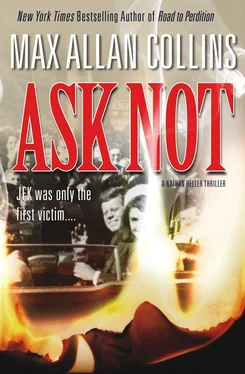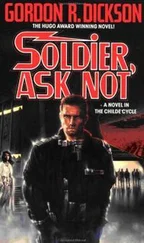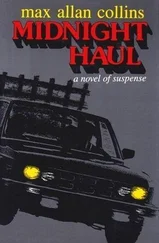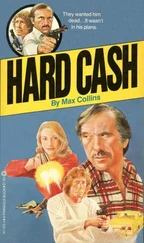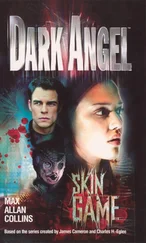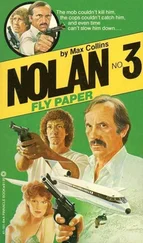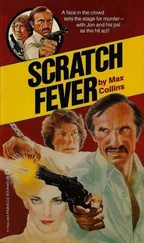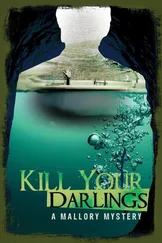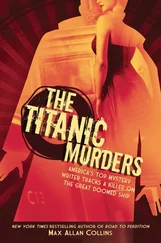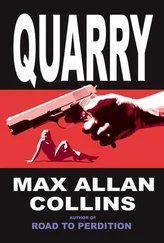“Yes. A cleanup crew. Getting rid of pesky witnesses and annoying snoops. And you may have noticed that I fall into both categories.”
He was frowning in thought, his fingertips tented. “Who do you suspect in this?”
“Not CIA. As my handler said, if the CIA wanted me dead, I’d be dead by now. The Billie Sol aspect, if it ties in, might indicate Texas oil. But Ruby, and whether anybody can connect him to Oswald, pre-assassination, seems to be the focus.”
“Which means mob.”
I nodded. “Which means mob.”
He cocked his head. “And this began with a Cuban trying to run you down.”
“Yup.”
“And you’re someone else who saw Ruby and Oswald together.”
“Right.” I shrugged. “Who knows? Maybe everybody’s trying to kill me.”
“Nate,” Bob said, some spark back in his blue eyes, “considering how long you’ve been around? Everybody’s got a reason.”
“Glad I finally cheered you up,” I said.
The sound from the window seemed to be intensifying. “You didn’t really know Jack well, did you, Nate?”
“No.”
“Half the days he spent on earth he was in intense physical pain — scarlet fever, terrible back pain, and just about every conceivable other ailment in between.”
Including VD, I thought.
“We used to joke that a mosquito took a hell of a risk biting him.” He was smiling with the memory. “On a trip around the world about ten, twelve years ago, he, uh, got so sick I thought we’d lose him. His Senate campaign? He spent it on crutches.”
“No kidding. Did he bitch?”
“Not once. I never heard him say anything resembling God had dealt him a bum hand. If you were close to him, you knew when he was having trouble, because his face got a little whiter, the lines around his eyes a little deeper... maybe his, uh, words a little sharper. Those who didn’t know him so well didn’t pick up on anything.”
“If you want to honor his memory, Bob, then do me a favor and let my guy Bill Queen tighten up your security.”
But he wasn’t hearing me. He was saying, “When that Jap destroyer sank his PT boat, Jack swam and swam, rescuing six of his crew, leading them to this small island, towing his badly burned engineer all the way. Then he went for help — he swam for two or three hours in the black cold of that water and that night, and then tread water and finally just drifted till dawn, his mind a hallucinating jumble, his only clear thought that he was going to die and then when he didn’t, it changed him. He told me so many times, ‘You’ve got to live every day like it’s your last day on earth.’”
That had been the nobility of Jack Kennedy, all right. Also his weakness — it had put him in bed with Marilyn Monroe and Judith Exner and so many other willing women.
But who was I to talk?
We spent another five minutes with family chitchat, shook hands, and then I left him there, with his brother and the waiting throng.
Chapter 10
This was the same kind of warm sunny fall day that had greeted John F. Kennedy last year when he and his wife Jacqueline and their entourage emerged from Air Force One at Love Field late on the morning of November 22. That had been a Friday. This was a Monday, just after two P.M. Traffic was medium, the tourists minimal, the citizens of Dallas at work or otherwise occupied. Meanwhile, a New Yorker named Flo Kilgore was giving a Chicagoan named Nathan Heller a tour of the most famous crime scene of the twentieth century.
On the edge of downtown Dallas, west of Houston Street, was the landscaped triangular city park called Dealey Plaza; there Elm, Main, and Commerce Streets converged at a triple underpass, Elm turning into Stemmons Freeway, while at the south, east, and north, like battlement walls, tall buildings loomed over this grassy oasis in a modern city. Where Main Street entered the Plaza, and at the outer edges of Commerce and Elm, decorative colonnades with fountains and basins stood on either side, dispassionate observers from another age. The grassy slope within the Plaza that had been above and to the President’s right was bounded by a seven-story turn-of-the-century rust-brick building — the Texas School Book Depository — on the corner of Elm and Houston. A sidewalk to the south, a parking lot to the north and east, and a railroad bridge over the triple bypass completed the crime-scene picture.
The President’s motorcade eased down Main, turning right at the Criminal Courts Building, going one block west past the Dallas County Records Building, just south of the Dal-Tex Building, finally turning left on Elm, heading toward the underpass on the way to Trade Mart, where Jack Kennedy’s next event awaited. Of course another event had intervened.
The President’s car had been second in line, making it only a third of the way to the underpass before the first shot came, one of at least three. Officially, all the gunfire had emanated from the east corner window of the sixth floor of the book depository, supposedly the work of a malcontent with a blurry grudge against society.
I parked my rental Galaxie in the lot behind what the press had dubbed the Grassy Knoll. Flush with the parking lot was a wooden picket fence; at our right, past the parking lot, were train tracks, and behind us the lot was bordered by the train-switching station, while at our left rose a scuffed-looking white WPA-era monument to the memory of newspaper publisher G. B. Dealey.
From the corner of the fence where its left side met its front, the view was blocked at far right by a tree, but otherwise provided a clear shot, so to speak, across the three lanes of Elm Street. At left two flights of cement steps rose from the sidewalk to that memorial that had provided citizens perches from which to watch the motorcade, and a path for police and brave bystanders to run up to try to spot and even stop the shooter they thought they’d heard, and seen by way of white puffs of smoke from his gun.
Flo stood at that picket-fence corner and pointed a pretend rifle toward Elm Street. “A sniper shot from here.”
“You sound sure of that.”
My girl reporter looked touristy and not immediately recognizable as the famous regular on What’s My Line? , dark wispy bangs hiding some of that high forehead, a ponytail utilizing the hair that usually made up a bouffant, her sunglasses large with white frames. She was in a light-pink blouse and dark-pink slacks with red shoes, like Dorothy in The Wizard of Oz, only not glittery.
And there was no doubt we weren’t in Kansas anymore. Wonderland, maybe.
Me, I was a tourist type myself, in Ray-Bans and a black-banded straw Stetson (this Texas sun had me back in hats again), a white-and-shades-of-gray vertical-striped seersucker sport shirt, charcoal Leesure slacks, and Italian loafers. Stetson yes, cowboy boots never.
“I am sure,” Flo said, leaning an arm between pickets. “This is where any number of witnesses say they heard the shot coming from. One of those witnesses was an army man home from basic training, taking pictures of the President to show his buddies back at the base.”
“Is this somebody you talked to you, or was it your pal Lane and his bunch?”
She had been working, off and on, with a lawyer from New York, Mark Lane, who had associates investigating the assassination. He was writing a book, which made me skeptical. Of course, Flo was writing one, too. But she was paying me.
“I talked to the soldier,” she said. “His name is Gordon Arnold. He was standing right over there.”
She indicated the grassy incline, maybe three feet from where we stood.
She was saying, “Said he felt a bullet whiz past his ear, heard the crack of a rifle, and that it was like standing under the muzzle. He hit the dirt and another shot flew over him.”
Читать дальше
